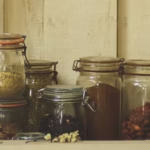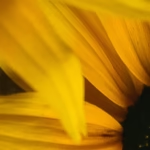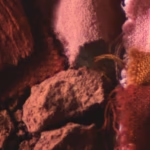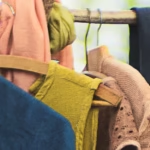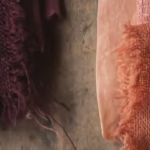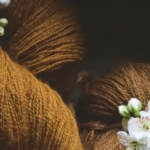The fastness of natural dyeing
This is the question most often asked when talking about natural dyes.
It’s the victim of a deep-rooted prejudice among our contemporaries: pale colors, colors that don’t last…
To believe in this prejudice is to ignore the history of natural dyeing.
Botanical colors have endured for centuries
Since time immemorial, man has combined color with nature. He used the plants and natural resources of his environment to extract color and dye textile fibers.
Some colors of these textiles survived the centuries. They bear witness to the ancestral know-how of a natural dye that stands the test of time, as showed by Dominique Cardon (link in French), director emeritus at the CNRS, in archaeology on ancient textiles.
In the Art Eco Vert podcast (link in French), Dominique Cardon explains how she worked on textiles worn by mummies from the Bronze Age, over 4,000 years ago. She found white wool yarns dyed bright red. After biochemical analysis, this red was that of madder root. This madder red has remained vibrant for over 4,000 years! As Dominique Cardon points out, the same cannot be said for synthetic colors.
It is important to remember that prior to the introduction of synthetic colors in the mid-19th century, all dyes were made from plants or insects.
Dominique Cardon’s extraordinary research traces the history of this craft wiche has been practiced since time immemorial on every continent (Le monde des teintures naturelles, in French).
The dyer’s apprentice sought color in the surrounding flora. From simple grasses to leaves, flowers, bark, and roots, all have been utilized by humans to extract color.
In the 18th century, Mr. L. A. Dambourney documented his extensive search for colors derived from local flora,in his Recueil de procédés et d’expériences sur les teintures solides que nos végétaux indigènes communiquent aux laines (link in French). His journey was marked by numerous disappointments, as well as some remarkable discoveries.
Many shades of yellow and beige, ranging from muted to vibrant, testify to a local flora abundant in tannins and flavonoids.d flavonoids.
Experience has transformed the dyer’s apprentice into a skilled practitioner of the art of dyeing. From the vast array of plant resources available for creating color, he has gradually selected only a limited number: those that produce the most vibrant, beautiful, and durable hues. Thus, the art of natural dyeing was born.
“Grand teint” and “petit teint” colors
In France, from the mid-18th century onward, this art form was “codified” under the guidance of Colbert. It has become an academic discipline, akin to pharmacy or glassmaking.
To maintain the prestige and reputation of France’s thriving textile industry, dyers were subjected to stringent regulations and controls. (L’art de la teinture à l’Académie
royale des sciences au XVIIIe siècle, Christine Lehman, in French).
For according to Colbert, ” All visible things are distinguished or made desirable by color; and not only must colors be beautiful to give course to the cloth trade, but they must also be good, so that their duration equals that of the goods to which they are applied. ” (Lettres, instructions et mémoires de Colbert publiés d’après les ordres de l’Empereur, Pierre Clément (ed.), Paris, 1861, in french).
These regulations classified colors by distinguishing between “grand teint” colors, which are solid colors intended for luxury fabrics, and “petit teint” colors, which are of lesser quality due to their reduced durability. The criteria for color fastness are resistance to UV light (lightfastness), repeated washing (washfastness), and rubbing (friction fastness).
At that time, indigo, gaude, madder, and cochineal were classified as “grand teint” colors.
A color that lasts, a relative requirement
What does this distinction mean?
Inherited from a regulated textile industry, the difference between “grand teint” color and “petit teint” colors is now put into perspective. It all depends on the purpose of botanical dyeing.
Let me explain.
The fastness of Natural Colors from a marketing perspective
If the dyed textile is to be marketed, it is essential to select a dyeing process that is appropriate for its intended use.
Resistance to UV rays, repeated washing, and abrasion is necessary for textiles subjected to heavy use, such as linen and cotton summer clothing. The dyeing process must be tested to ensure it can withstand prolonged exposure to sunlight and frequent laundering. The choice of plants for a “grand teint” color is crucial. The same considerations apply to the mordanting process.
To this end, the use of tannin-rich plants often improves UV resistance. Of course, we will not be using any mordants derived from heavy metals, which were widely used in the 18th century: very effective but highly toxic.
The fastness of plant colors from an experimentation and creation perspective
While textiles made from animal fibers, such as wool and silk, are subject to less stringent constraints, the choice of plants for color is broader. Since animal fibers naturally have a strong affinity with botanical dyes, the dyeing process is generally simplified.
When you dye for home use, for the pleasure of a creative activity with plants, the field of possibilities expands.
We’ll be looking for the thousand and one nuances offered by a plant. Only the vibrancy and beauty of its colors will catch our eye.
If the color fades slightly, it is not a concern. The fabric is then immersed in a second dye bath, which will enhance the hue.
The only thing that truly matters is the pleasure of engaging in the activity. Infuse color into the fibers and marvel at the magic; the magic of color unveiled by plants. This is a quest to rediscover our flora, exploring the richness of its biodiversity and its unsuspected powers.
It was with this in mind that I wrote the book, Wild Dyeing: From the Garden to Color – An Introduction to Natural Vegetable Dyes: to bring natural dyeing within everyone’s reach, and to take a different look at the plants in our daily lives.
Some recipes are tried and tested, while others are entirely empirical. What they all have in common is that they are entirely plant-based, with the mordanting stage also being exclusively plant-based.
I sometimes feel it is a pity to view natural dyeing only through the prism of colorfastness, as this perspective can be somewhat reductive regarding the practice of natural dyeing.
As evidence, one of the world’s most widely used yellow dyes, turmeric, was banned by 18th-century dyers due to its fugitive nature. Nevertheless, turmeric remains an important color resource, rich in history and symbolism across all South Asian countries. Dipping his robe once again in a turmeric decoction to enhance the color was certainly no problem for the Buddhist monk.
t’s all a matter of state of mind: the need to “produce” a color that lasts or the joy of creating a beautiful hue.
Experience (link in french) shows the difference.
In conclusion, the answer to the question of whether botanical color resist is :
- Yes, if the choice of plant and mordant are adapted to the intended use of the dyed textile.
We don’t dye table linen with anthocyanin-rich plants like elderberries, hoping to keep the pretty purplish-pink fresh out of the dye bath. Repeated and rather alkaline washing will turn the color gray.
For heavy-duty table linens, indigo dyes or colors rich in colored tannins, such as cachou, avocado, onion or pomegranate peel, are preferable.
- Yes, if the dyeing process is carried out correctly and the textile is suitable for natural dyeing.
The need for solid color is relative. Indispensable if the color is to be marketed, it can be tolerated if the color is for domestic or personal use.
I enjoy dyeing vintage clothes and linens as a creative hobby. Some colors have faded, while others have retained their vibrancy, giving the old linen an old-fashioned charm that I like.
On my woollens, the colours have kept their vibrancy. But for how long? Centuries? I don’t know. I don’t have enough time left to say.
